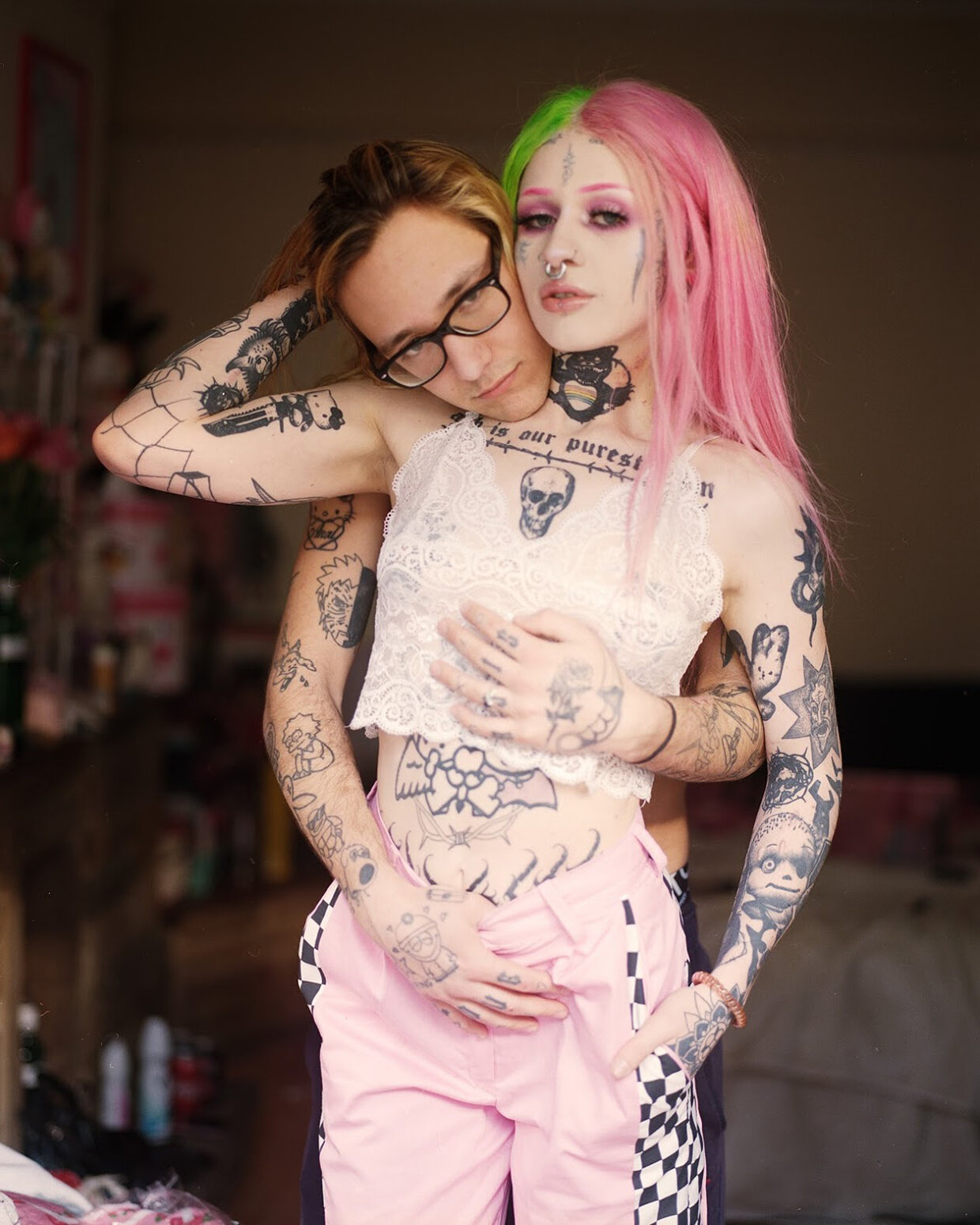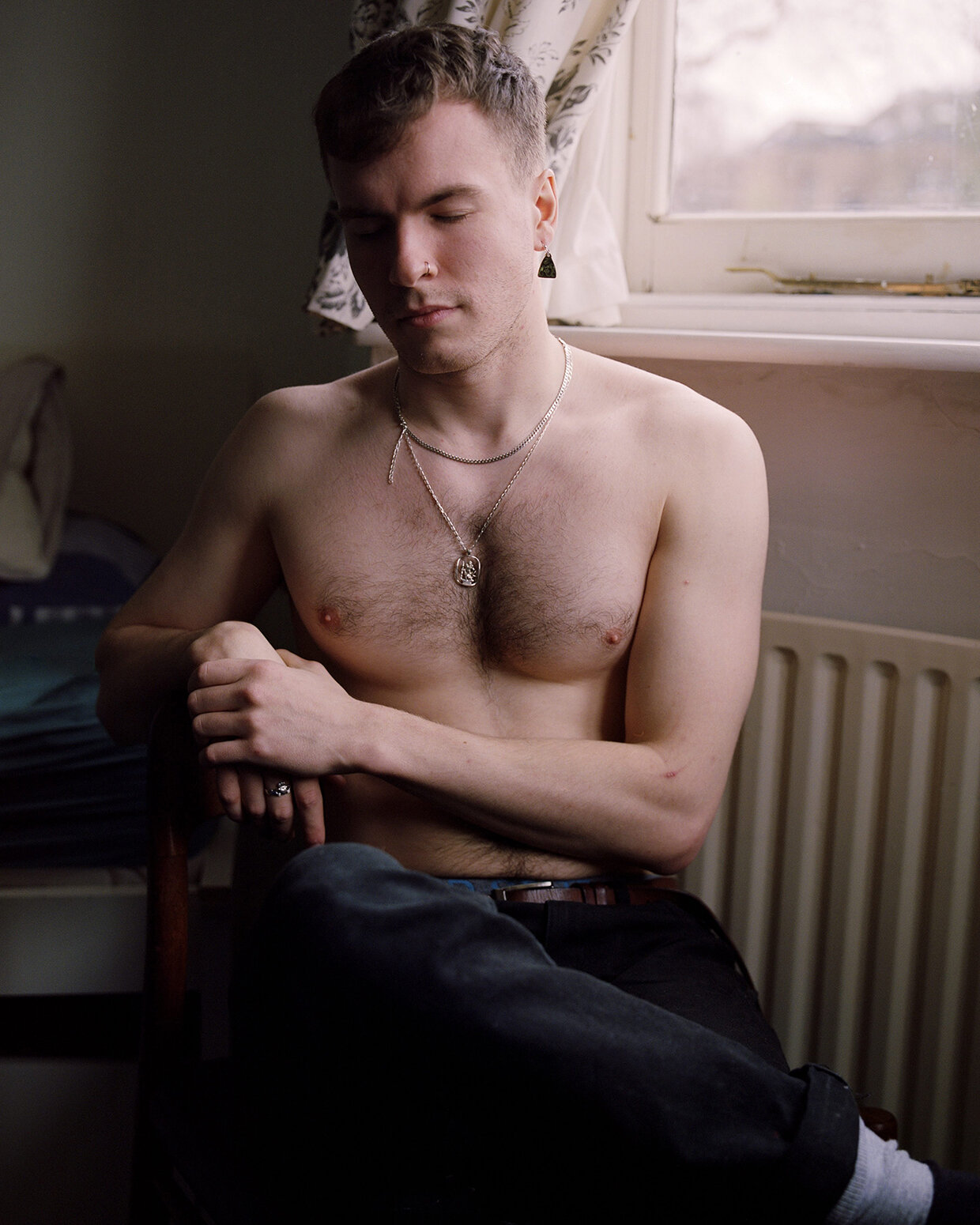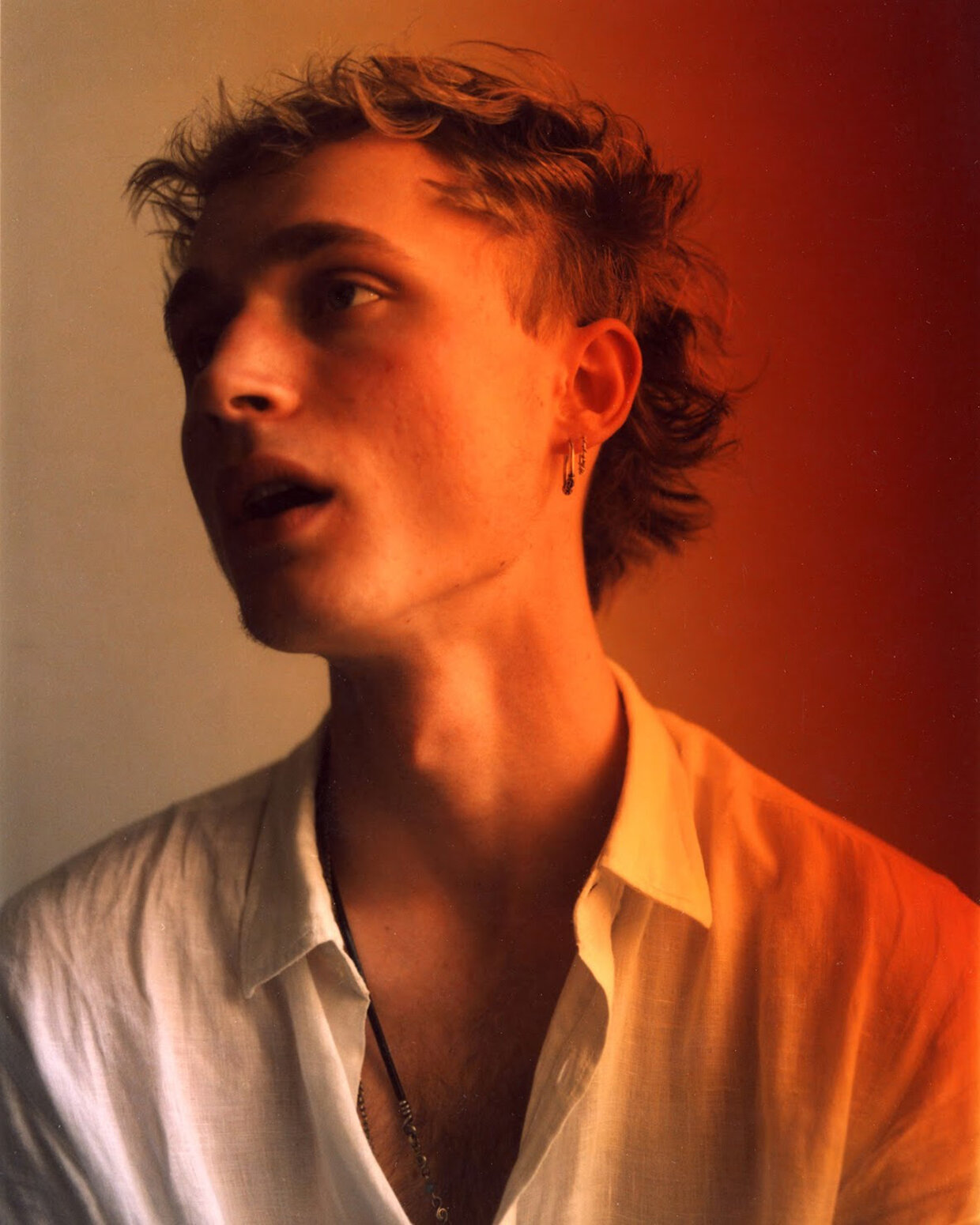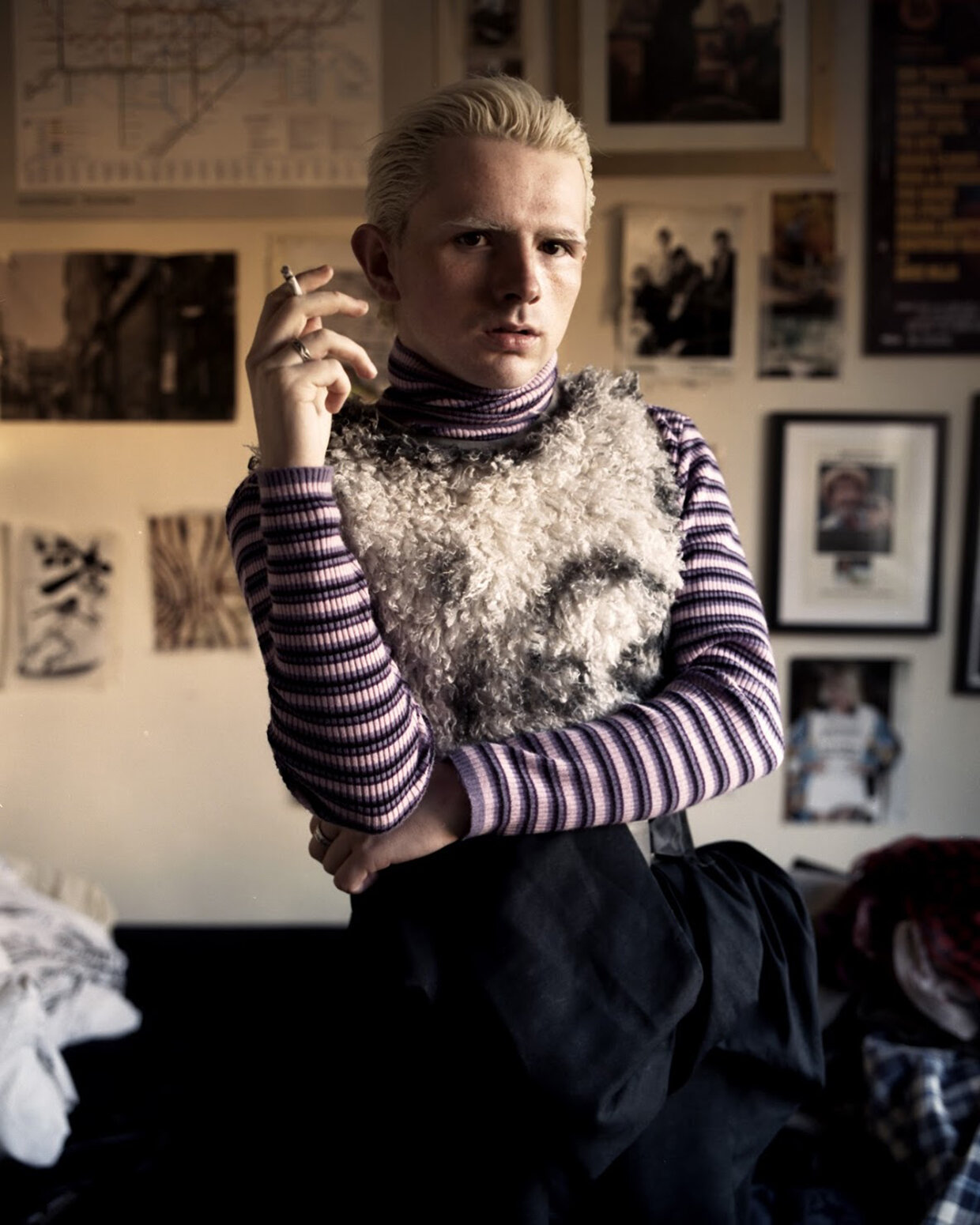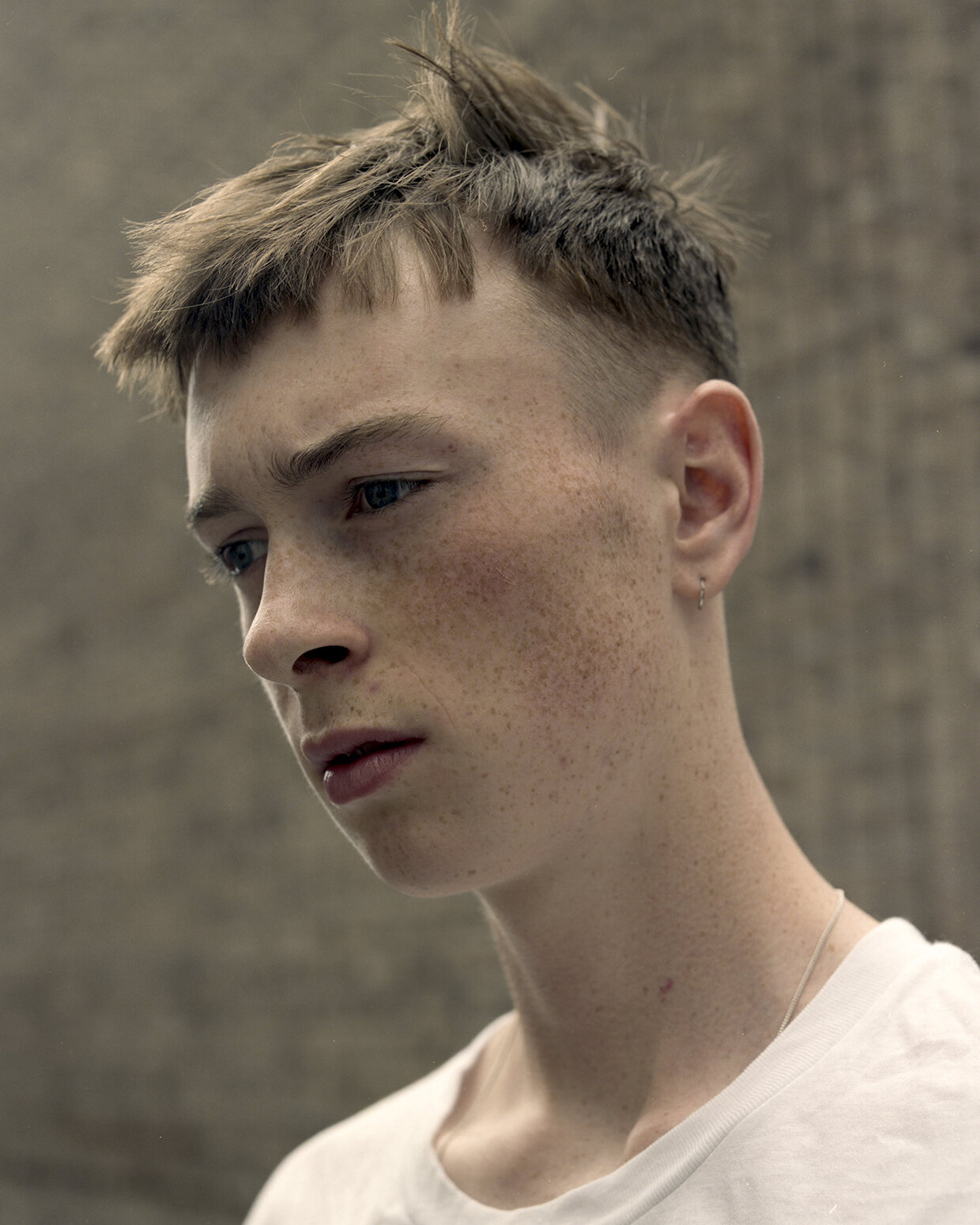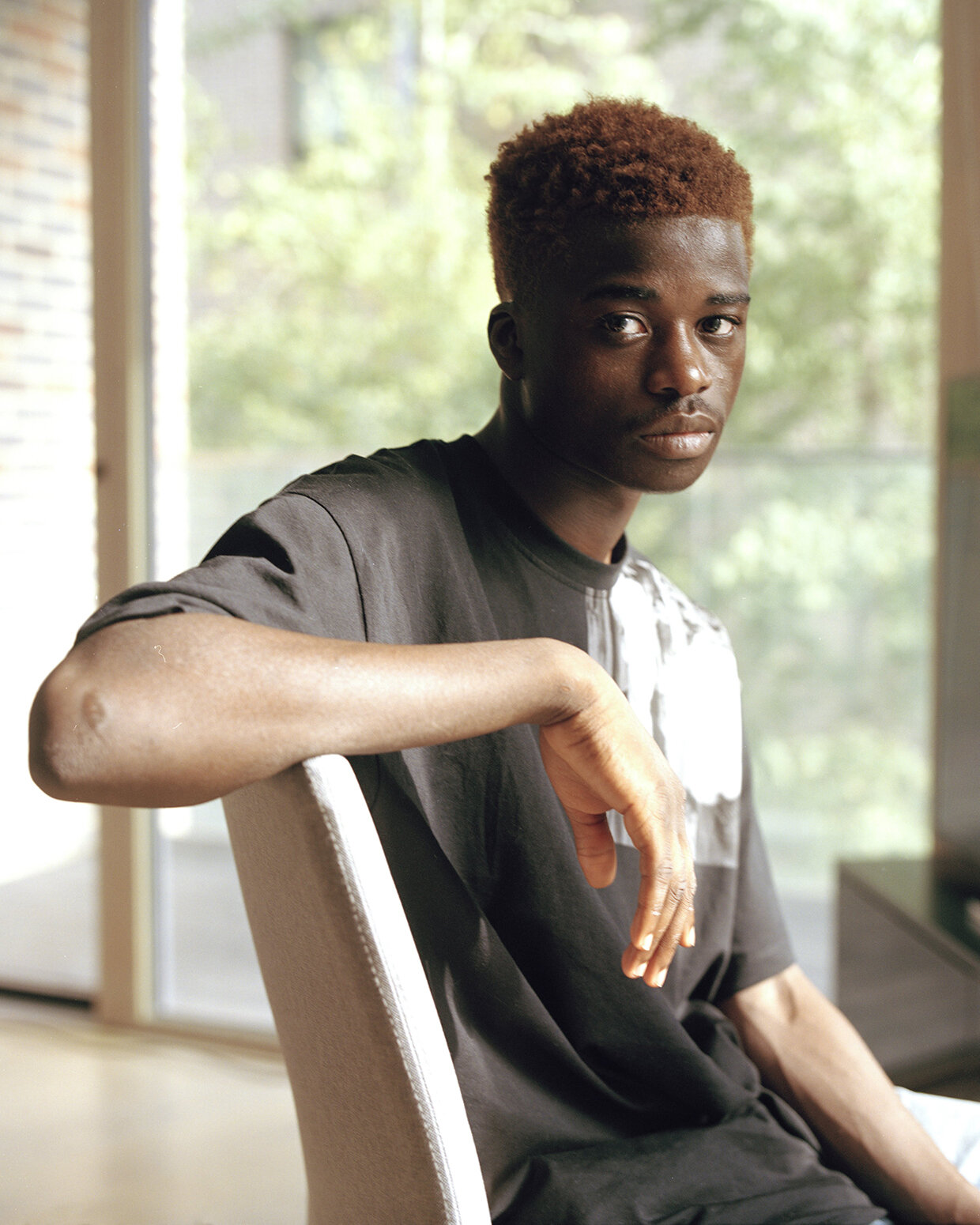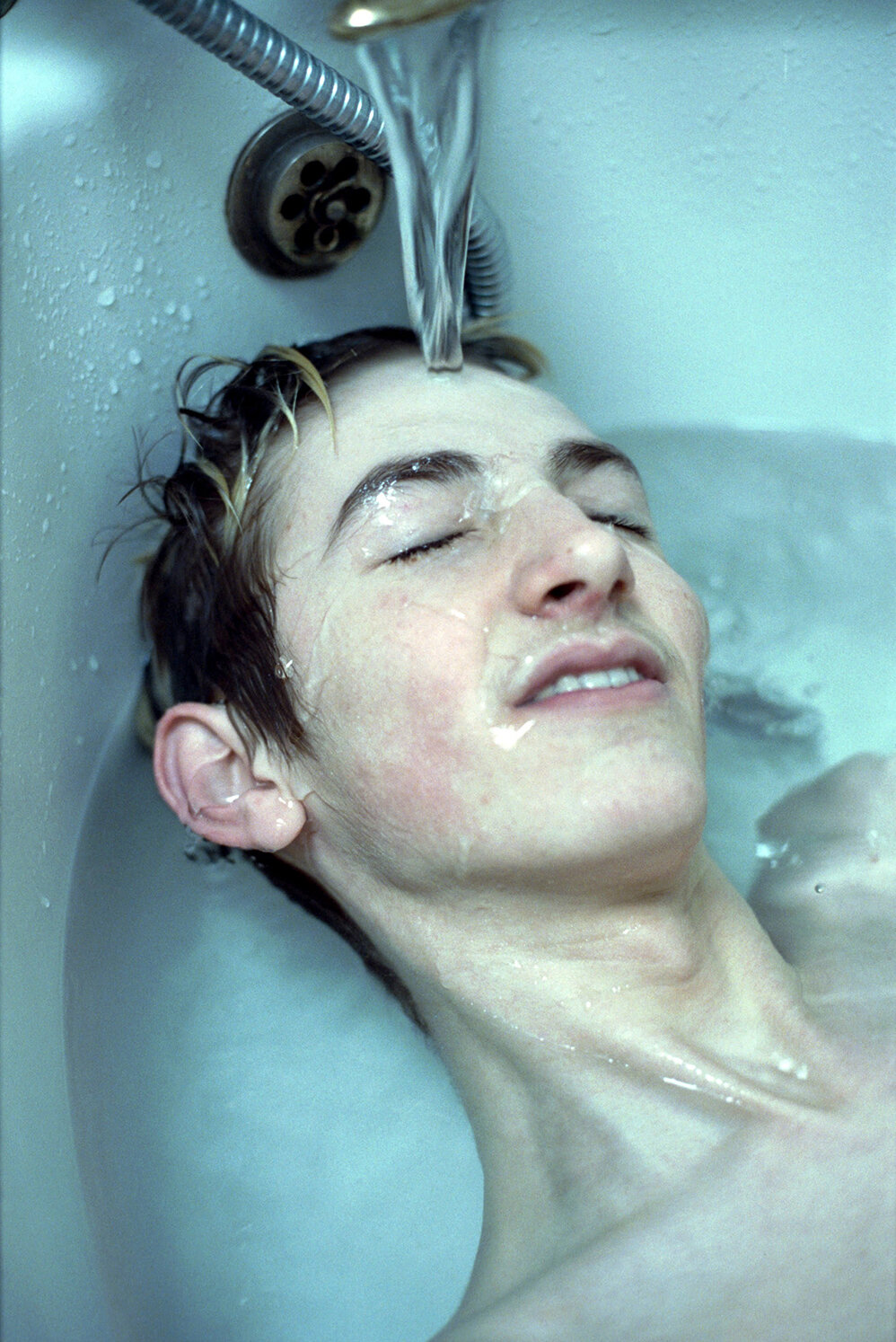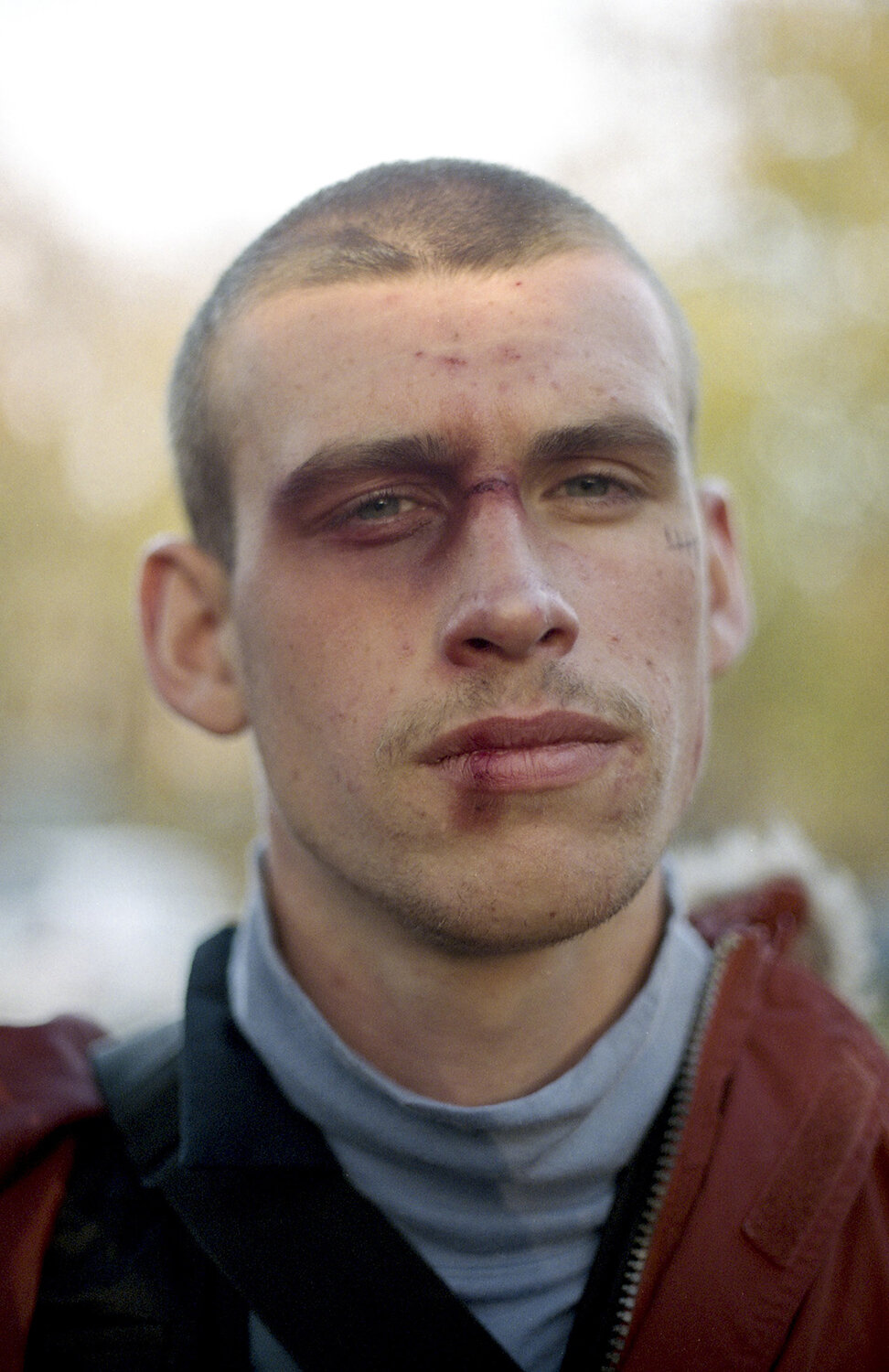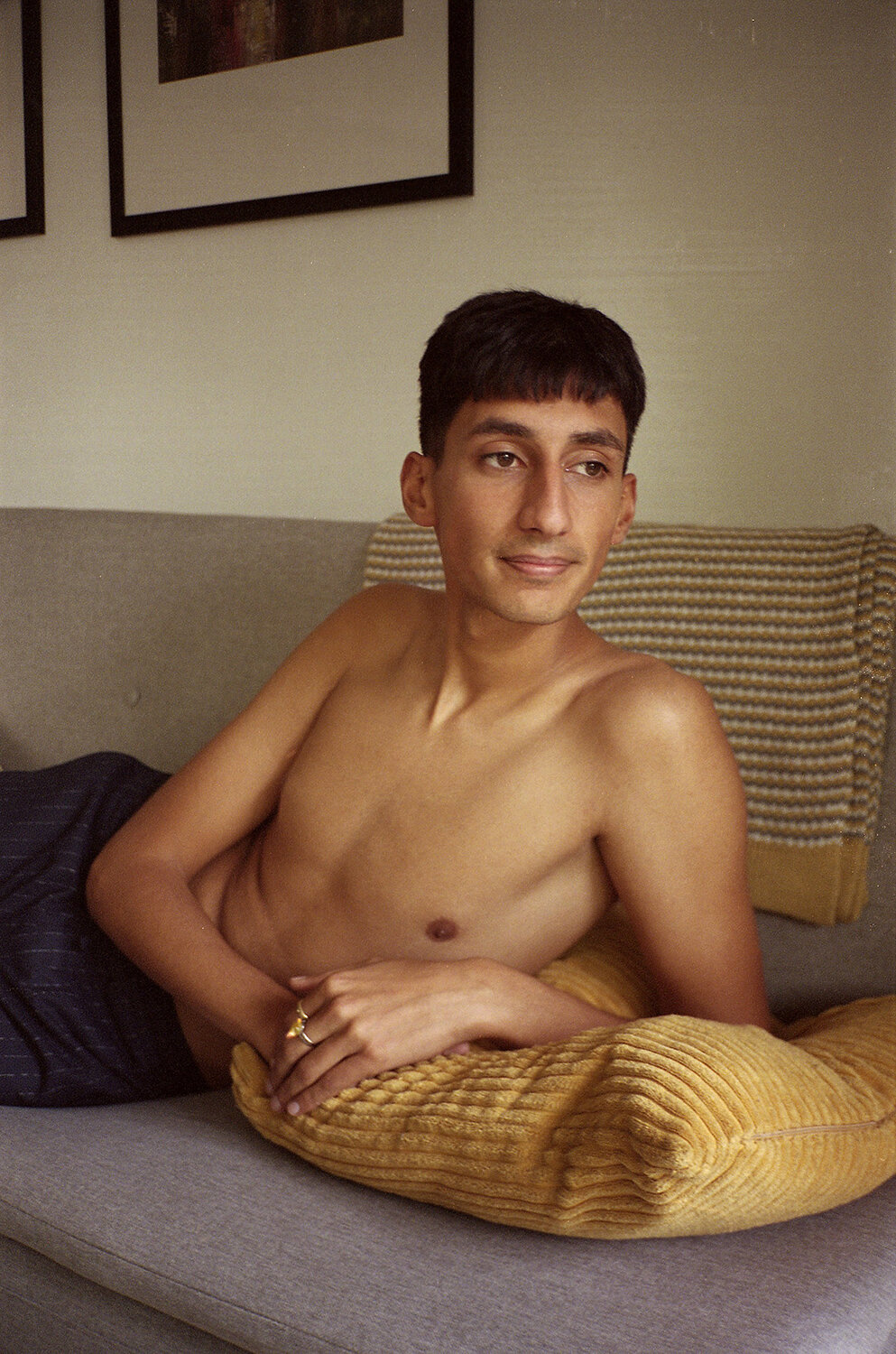James Greenhalgh
Hi James can you start by introducing yourself? How do you use your camera as a tool to better understand yourself and the world around you?
I’m James Greenhalgh, I’m a fashion photographer born and raised in South London. My work explores my own identity with a focus on navigating masculinity in my generation. I’m compelled to take photos so I can understand myself more and I hope my photos can help others who share the same confusion in what being a “man’ means. The people I photograph are sometimes friends I’ve known for years and sometimes they are people who I’ve met only and a short conversation with, but either way they have left an impact on me and I see a part of myself in them. I see my photos as my own self-portraits through other people. I feel that photographs, although limited in their ability to capture the full complex spectrum of identity, have an ability to communicate emotions, stories and the personality of the photographer within themselves in a way which can’t be done with words. Photographs are often so subjective as well, this means that whoever looks at the photo can attach their own emotions and feeling to an image.
What I love about your portraits is that you are celebrating and exploring the qualities normally associated with femininity and showing their existence in masculinity. In a society used to masculinity as a more aggressive behavior how does your creative process spin that perspective? Why is this important to you?
You’re totally right! Growing up, I never connected with the figures considered masculine / manly. I feel like many other guys also didn’t connect with them but out of a fear of being different, or what even worse for a young boy, feminine – We all conformed to it. I think homophobia plays a big role in this. Homophobia has been such a huge part of the world for centuries and despite huge leaps in LGBT+ rights over the past few decades, we still live in a very anti-queer world.
As said in my last question, I’m naturally drawn towards photographing guys who are more feminine as that’s what I see in myself. I do have friends who are naturally more masculine and I look to try and see what’s underneath their mask of masculinity. My creative process mostly happens before I’ve gotten my camera out, the conversations are what creates this honestly and openness to come out between me and who I’m photographing. Sometimes it can take a long time and I don’t always get what I’m looking for in the first photoshoot. I have some friends who I have photographed consistently for years and I still feel like there is more to uncover. I wouldn’t say that I’m on a mission to make me more feminine though, I just want men to be more aware of their masculinity, dissect between what is their true personality and what aspects are they just performing because they think that’s how they have to act to be a man.
Can you walk us through your conversations with your subjects? How does your way of engaging in dialogue help create a space of openness between you and who you are photographing? How important is this part of your process?
The conversations are quite informal to be honest! I don’t think I have a formula but i’d say most of the conversations start by comparing cultures of masculinity; depending on where you grow up in the world, your friends and your family – the expectations and responsibilities of the “man” can be very different. Some men have the breadwinner mentality installed into them from a young age. The traditional idea of the man being the head of the house where as some might remember being brought up on a very level playing field to the rest of their friends and family. Quite a few men that I’ve photographed have never even thought that deeply about what it means to be a man. This is why continuing to photograph the same people can be so beneficial. After your first photoshoot, they might have had their thoughts develop more and more. I hope that the openness that emerges from the conversations transcends into the final photographs. I’m happy even if the final photograph only resonates with the person I photographed as a reminder of that day and what we spoke about.
How do your images help people investigate who they are?
I hope that people can find relatability in the people I photograph, the same way I find relatability in them. Photography’s subjectivity can naturally allow this to happen I think, people find their own meaning in images and I just try and show what I was trying to get out of the image. I’m always open for people to read my images how they like though; both in how they interpret the images in connection to themselves and also why they think I take the photos I do. First and foremost though I take my photographs for myself, I’d be doing this even if I had no way of sharing the photos with others. At the end of the day though, the older I get, more people I meet and more experiences I have; the more my work will change, I’m sure!
What has been the most challenging part of your creative process? How did you overcome this challenge?
The most challenging part of my creative process sort of links to the end of my last answer. Before coming to university I would take photos just because it felt right, teachers would always press for us to have full written explanations behind every image we took and I really struggled with this. I understand though that school isn’t always the best environment for creativity because you are quite restricted time wise (you might have only a couple months to put together a full project) while you also have to balance all the other subjects you are studying. I still take photos in the same way: Following my instinct even if I don’t know why I’m taking the photos at the time. I overcame this challenge by firstly accepting that it’s ok to not have everything figured out, keep showing my work to different people to see their perspectives and to see the importance of the editing process: I’ve now found that I’m able to start really contextualising my work when I look at loads of my images together, I then start thinking about the experiences happening at the time, the relationships I had at the time, what was going on in my life etc etc... eventually through this editing process the mental jigsaw pieces start fitting into place and I’m able to start writing about my work.
I love what you said about letting go of needing to know why you are making something. Sometimes the need to know what you're making sort of stops people from evening beginning to create something in the first place. Why do you believe it is alright to let your 'Why' come from the process of the work?
Even today, I still sometimes have that worry to experiment encase of messing up or not being able to fully explain the photos I want to take. I used to have a pack of rare Polaroid film which I could shoot on either medium format or a 5x4 large format camera. It was gifted to me and it sat at the back of my fridge for about a year because I would always talk myself out of ideas and think a better idea would come along if I just waited. I bit the bullet and shot it one day in the studio and I couldn’t have been happier with the results (below is one of the Polaroids from the shoot)
I believe that the way photographs communicate to us are different from the way words communicate. Photographs can speak directly to our emotions and experiences, it can sometimes be futile to try and explain why they do. The best place to start is to trust your instinct, if the idea you have makes sense to you in your heart then that means that it has potential to speak the same message to someone else’s heart. And the only way to find out is to go out and create! :)
To keep up to date on James’ latest work follow along here:
Website
Instagram

